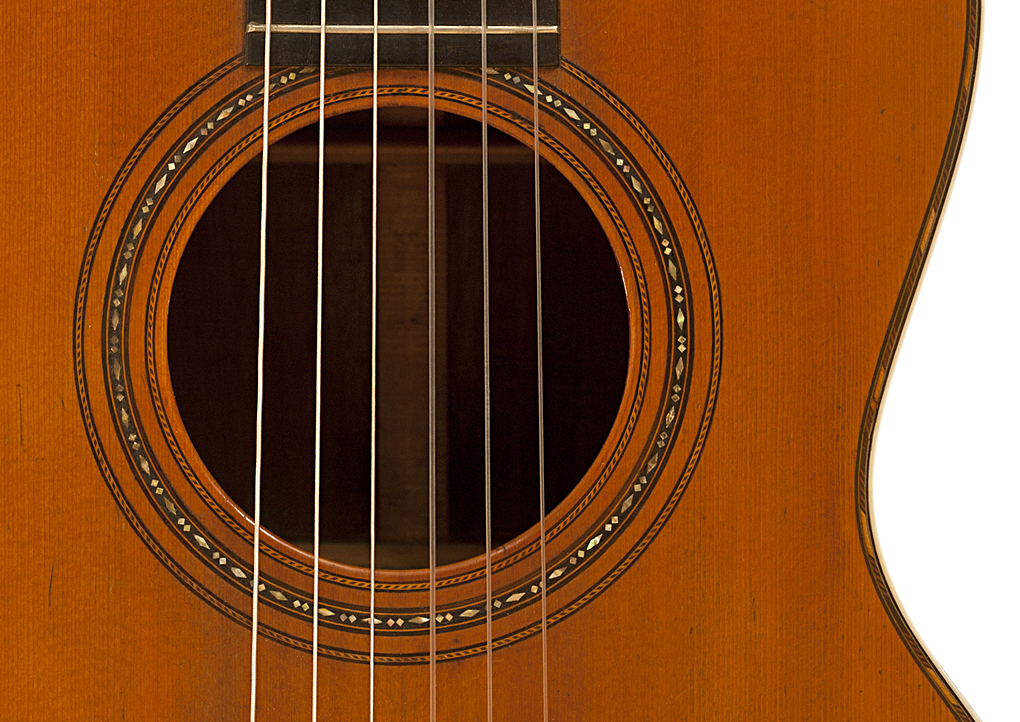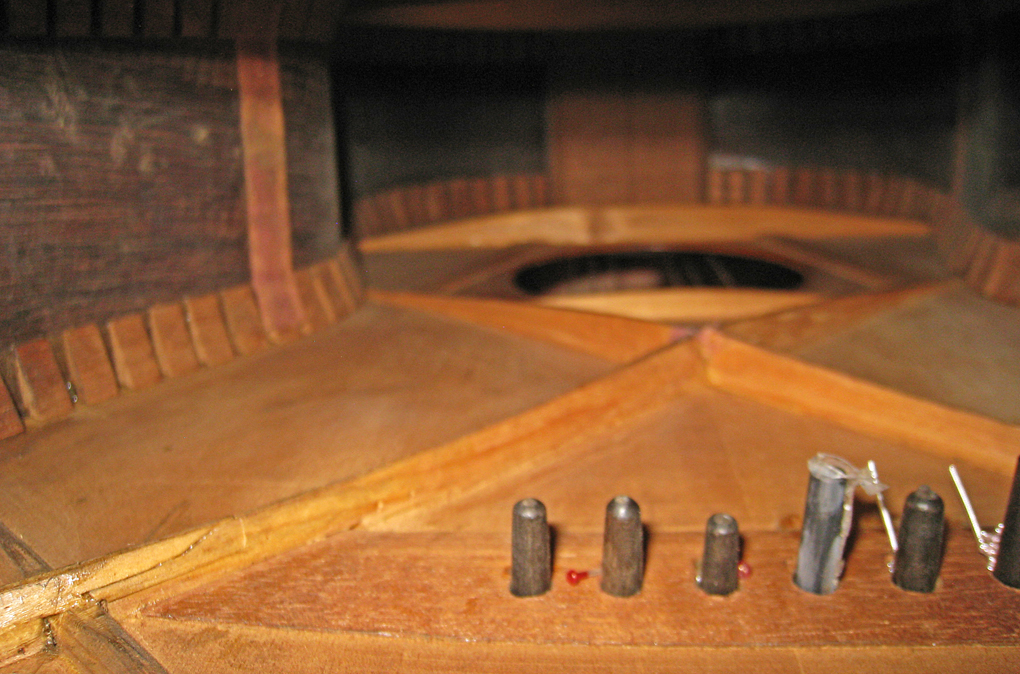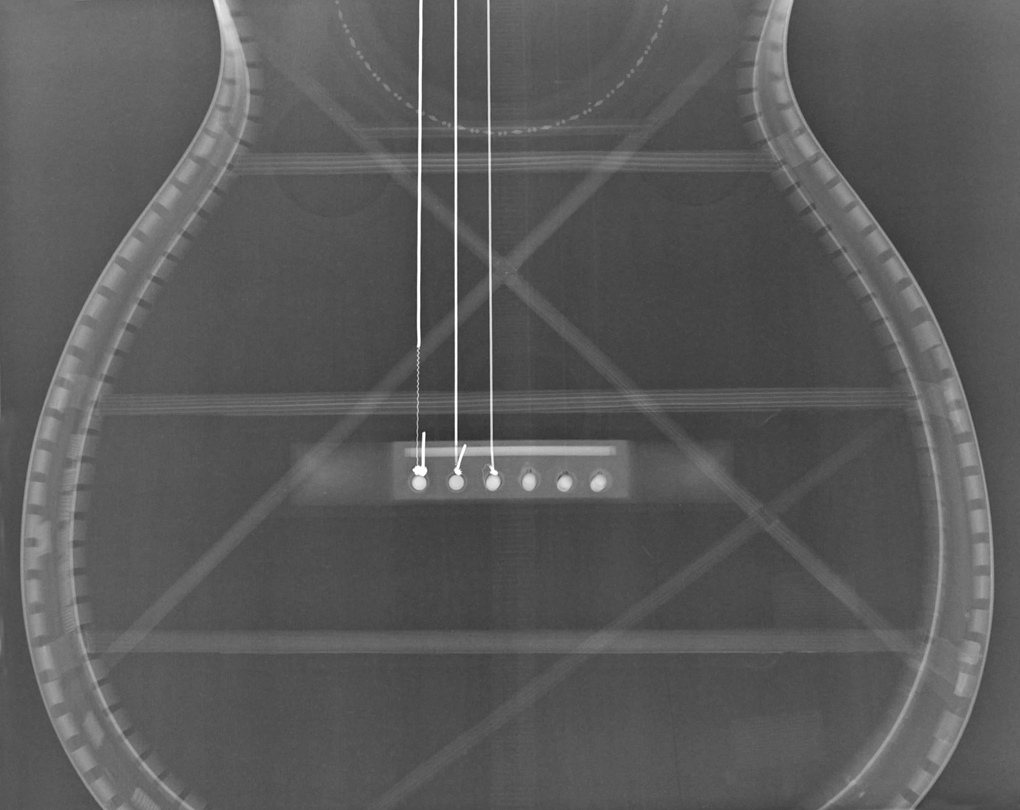Martin 1840's Spanish Alternate X Guitar
This guitar, formerly part of the Richard Gere Collection, is a mid 1840's Spanish Style guitar with an early experimental version of X bracing.

Less than a dozen examples have been seen of Martin rosettes featuring rings of small abalone diamonds, which preceded the solid strips of abalone later used on the higher grade Martins.
The tiny rope pattern in the outer rings of the rosette is typical of Martin and Martin & Coupa guitars from the 1840's.
This is an early example of the combination of pearl rosette and marquetry top border which later became a common feature of Style 27, 30, and 34 Martin guitars.

Lower Body width: 12 13/16"
Upper body width: 9.25"
Body length: 18 13/16"
Upper body depth: 3 9/16"
Lower body depth: 4.25"
Neck width at nut: 1 7/8"
Neck width at 12th fret: 2 9/16"
Soundhole: 3 21/32"
Scale: 24.75"
String spacing at bridge: 2 13/32"
Top braces: Alternate experimental X with large C and tone bar crossing treble side of X to form second smaller X
Back braces: 4 1/2" V shaped braces
C.C. Martin New-York stamp on shield shaped 3.5" Spanish foot
The nickel silver nut is a typical feature of 1840's Martins.


While Jerome tuners with bone buttons appear on the earliest Martins, these rare large bone rollers appear on only the earliest Jerome tuners.

These large abalone dots on the neck rather than on the side of the fingerboard, as appeared on later Martins, is another feature sometimes seen on Martins of the 1840's.

This elegantly curved heel is typical of Spanish Style Martins of the 1840's.

The early "scooped back" or "lipped" version of the pyramid pin bridge is a holdover from the shape of the pyramid tie bridge seen on early Martins.

The diamond marquetry end strip is typical of Martins from the middle of the 19th century.

This is an early use of the "arrowhead" marquetry on the back strip which was imported from Germany and which remained through the turn of the century.



The Spanish Foot is a feature taken from the guitars Martin studied from Spain.

The Martin foot is actually a false foot, not attached to the neck.

Beginning in about 1846, both Martin and Schidt and Maul experimented with variations of the X brace pattern. On this guitar the tone bar below the bridge plate extends across the treble side of the X forming a second smaller X.







vintagemartin.com
To See Robert Corwin's Classic Photography of Folk and Roots Musicians, visit:
For Information on Photography for
Exhibition, Publication, CD's, Promotion, Web Pages, Tour Books,
to Purchase Photographic Prints, or
If You Have Questions or Suggestions About This Web Site or Vintage Martin Guitars:
e-mail: Robert Corwinentire site copyright ©1998 through 2011 Robert Corwin/Photo-Arts. All rights reserved.